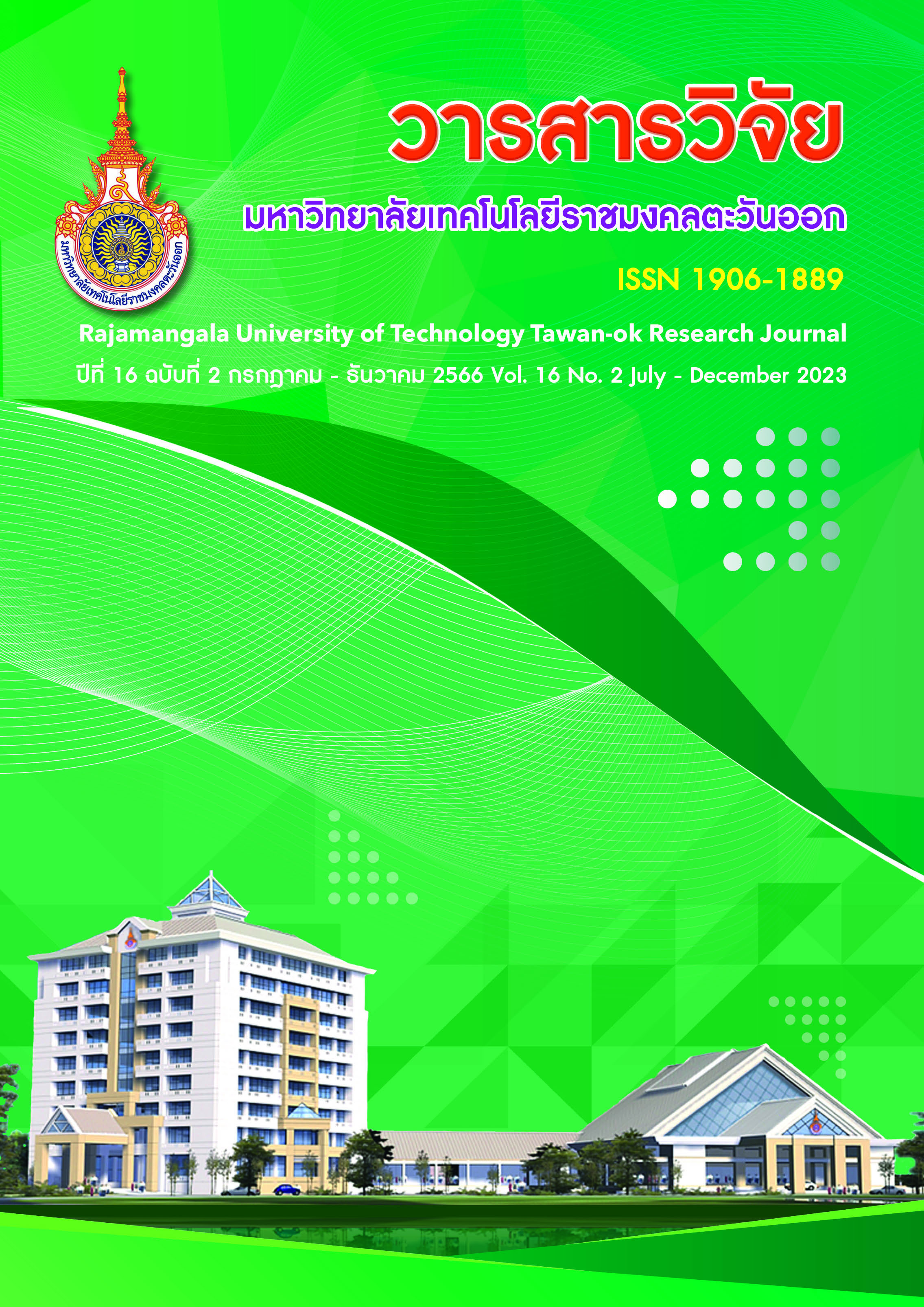Design of Temperature and Relative Humidity Test Kit for Grey Oyster Mushrooms Cultivation
Main Article Content
Abstract
This research aims to investigate the growth patterns of oyster mushrooms, analyzing the design and implementation of controlled temperature and humidity conditions for mushroom cultivation. The study also evaluates the economic viability of the proposed controlled environment. The study identified temperature and humidity as two key factors that affect the growth of oyster mushrooms. The controlled environment utilized a system consisting of two main components: a Digital Temperature Controller and a DHT11 sensor. The testing and evaluation apparatus had dimensions of 95 cm width, 95 cm length, and 120 cm height, accommodating 130 mushroom spawn. The experimental results indicated that during the first 5 days, the minimum temperature recorded was 27.6 °C, with a corresponding minimum humidity of 85.7% and a water consumption of 25 liters/day. In contrast, from days 6 to 15, the maximum temperature reached 28.4°C, with a peak humidity of 89.3% and a water consumption of 32 liters/day. It achieved temperature control by misting, resulting in an average internal temperature of 28.07°C, average humidity of 87.65%, and an average water consumption of 28.4 liters/day. A comparative analysis of mushroom yields revealed a weight of 5,067 grams for the non-controlled environment and 10,387 grams for the controlled environment, indicating a 48.78% increase in production. The economic assessment demonstrated a break-even point of 123 kilograms/year and a pay-back period of 2 years and 3 months.
Article Details

This work is licensed under a Creative Commons Attribution-NonCommercial-NoDerivatives 4.0 International License.
References
Aramphongpan, P. (2000). General Knowledge about Mushrooms. Economic Mushroom Cultivation.Training Supplementary Documents, Microbiology and Applied Biology Group, PlantPathology and Microbiology Division, Department of Agriculture. (in Thai)
Dulyarat, K. (2022). Automated Mushroom Cultivation Project. Retrieved 13 Aug 2023, from https://fit.ssru.ac.th/useruploads/files/. (in Thai)
Kalarod, A. (2018). Nature and Environment of Fairy Mushrooms. Retrieved 11 Aug 2023, from http://klarod.blogspot.com/2009/09/blog-post_8327.html. (in Thai)
Langkapin, J. (2022). Economic Analysis of Engineering Aspects in Preliminary Agricultural Machinery Usage. Department of Agricultural Engineering, Faculty of Engineering, Rajamangala University of Technology Thanyaburi. (in Thai)
Mountain. (2020). Temperature and Humidity Control System for Greenhouses. Retrieved 16 Aug 2023, from https://eng.kps.ku.ac.th/dblibv2/fileupload/project_IdDoc305_IdPro734. (in Thai)
Pratumthin, A. (2021). Design and Construction of Automated Mushroom Cultivation System. Computer Technology Department, Rajabhat University Kamphaeng Phet Campus Mae Sot. (in Thai)
Piwphan, U. Chaisuchot, S. & Thongme, R. (2018). Mushroom Maintenance. Retrieved 11 Aug 2023, from http://cddata.cdd.go.th/cddkm/prov. (in Thai)
Saengpakornkit, T. (2019). Origin and Significance of Fairy Mushrooms. Retrieved 10 Aug 2023, from https://it.nation.ac.th/studentresearch/files/. (in Thai)
Saowaraj, C. (2018). Temperature Reduction and Humidity Increase Process. Retrieved 20 Aug 2023, from https://li01.tcithaijo.org/index.php/TSAEJ. (in Thai)
Sathatphan, S. (2019). Characteristics of Fairy Mushroom Mycelium Suitable for Blooming. Retrieved 11 Aug 2023, from https://www.gotoknow.org/posts/423736. (in Thai)
Sudkaew, N. (2019). Fairy Mushroom. [Online]. Retrieved 10 Aug 2023, from https://uc.thailis.or.th/Catalog/Bibltem.aspx. (in Thai)


